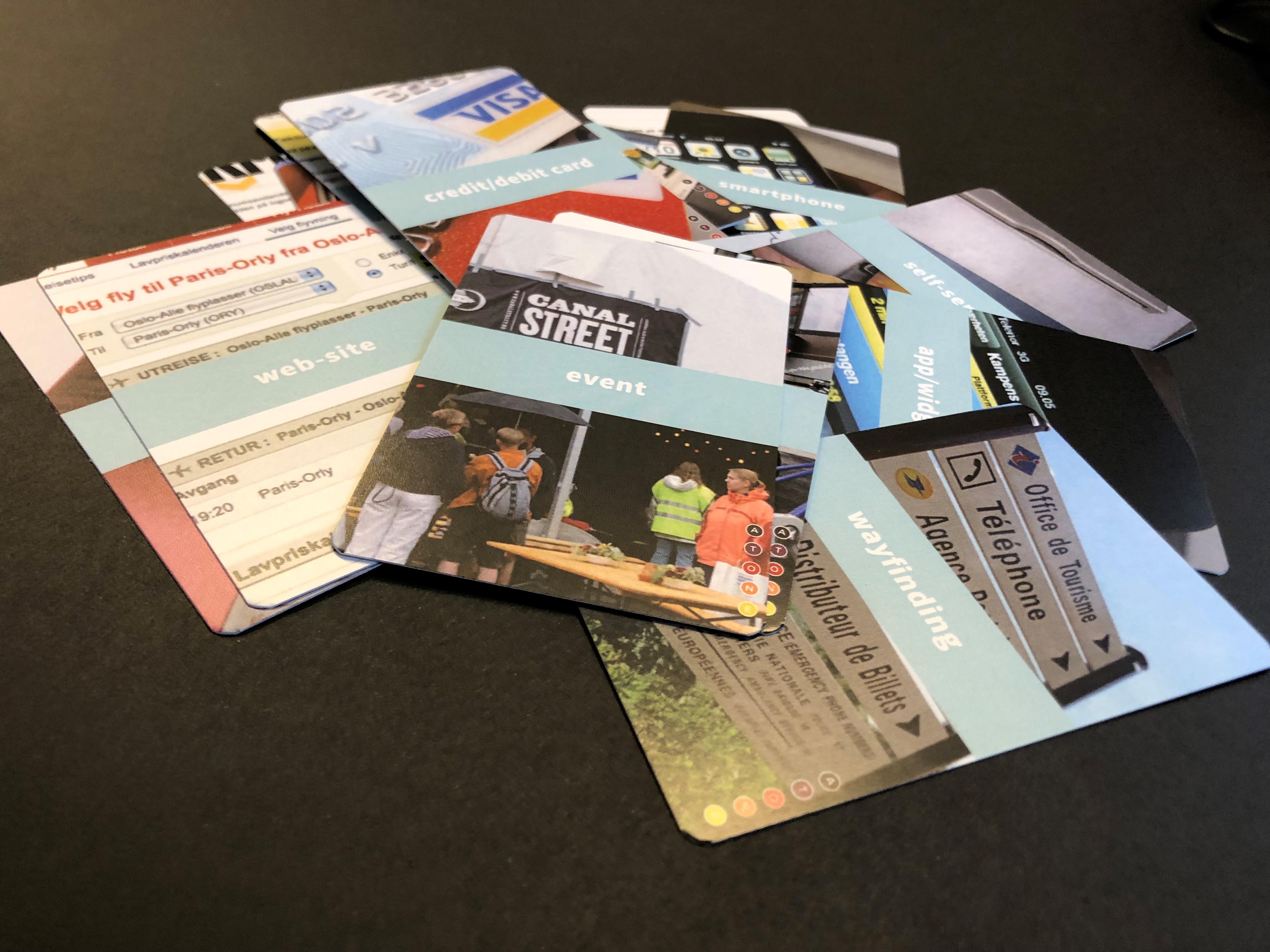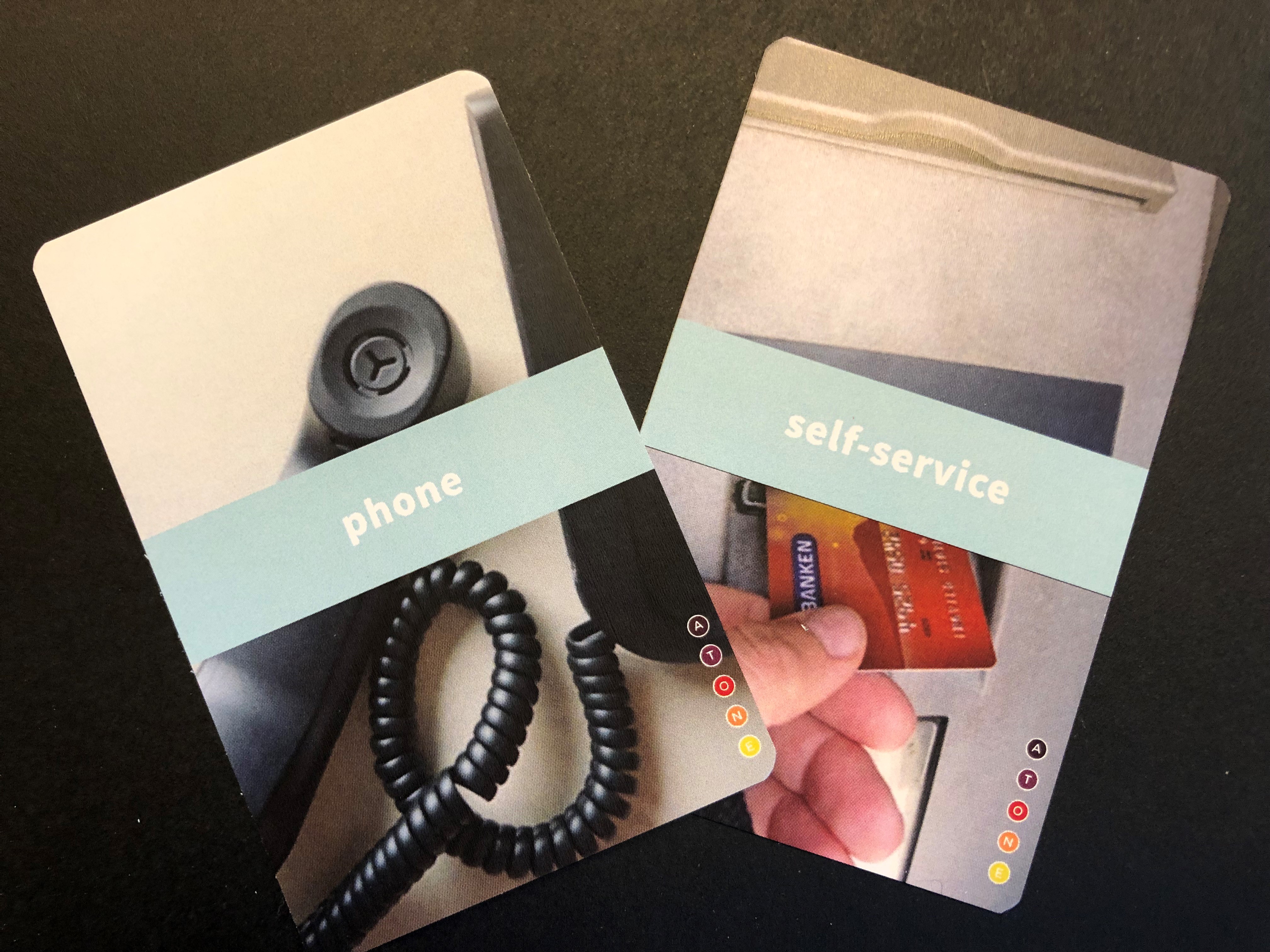Customers experience services through touch-points.
Designers work to ensure consistent experiences across multiple touch-points, innovate through new touch-points, and design for the customer experience of a single touch-point.
Tool 1: Mapping touch-points
Create a service journey.
For each step of the journey, choose the touch-point cards from the pack that the customer encounters.
This mapping can be used to then identify problems customers might have along the service journey, consistency of touch-point design, tone of voice differences between touch-points etc.

Tool 2: Can I use it here?
This helps you to renew touch-point thinking in a project.
Create a service journey for your project.
For each step of the service journey, go through the touch-point cards and place the ones that can be relevant for this particular step (probably a lot of them).
Identify the touch-points that will give the best experience for each step.
Tool 3: Touch-point take away
This helps you to renew touch-point thinking in a project.
Map the touch-points as described on tool 1. Replace them, one at a time, with alternatives. What does this add/or take away from the customer experience?

Tool 4: Whose touch point is it anyway?
This helps you to identify if your organisation has a fragmented touch-point approach.
Sort through the touch-point cards in terms of who is responsible for the touch-point content and form within your organisation.
Discuss in the group, how, and how well these different departments work together to create a consistent customer experience.

Tool 5: How does it feel?
This mapping can be used to identify pain points and to draw an emotional curve along the service journey.
Map the service journey (tool 1).
For each step of the service journey, choose the emotion card or cards from the pack that describes how the customer feels at this stage.
Tool 6: Turn it around!
Create a service journey and place the emotional cards to describe the customer experience for each step (tool 5).
If you have placed red cards, then turn each red card over, and ask the team: How can we change this experience (red
side of card) to become this experience (green side of card). Redesign your service so that you only have green cards.
Tool 7: Forced association
This helps you to generate service ideas using the well known forced association method. It’s simple, fun and forces you to
think in a different way.
Put all cards face down on the table. Pick two cards and create a service for your project based upon just these touch-points.

Simon Clatworthy & Ted Matthews have designed these cards (and graciously allowed us to reproduce them) to help you think about touch-points during the design process.
If you like them, please tell us.
If you don’t like them, please tell us too.
From the AT-ONE project.
www.service-innovation.org

